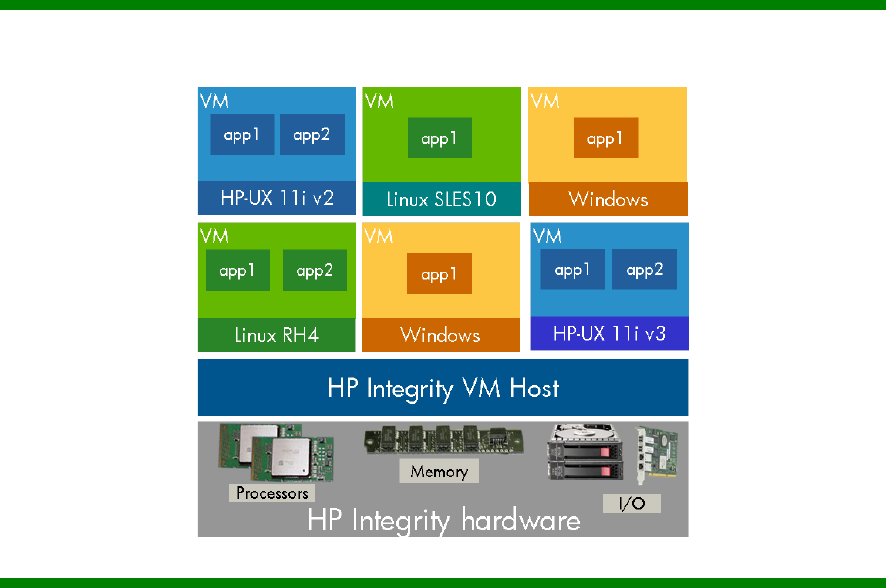Backup Strategies for Integrity Virtual Machines
Table Of Contents

Figure 1 Generalization of Integrity Virtual Machines architecture.
Backup and Recovery from the VM Host System
Keeping in mind that a virtual machine’s storage can be accessed from the VM Host system, one can
imagine that backups run on the VM Host can also effectively backup storage on the virtual machines.
This is true because the virtual machine’s storage must be accessible by the VM Host system. From
this perspective, the virtual machines are effectively applications running on the VM Host system and
their storage is effectively the data used by those applications (virtual machines) while they run on that
(VM Host) system. Most backup software will not archive any storage that is “open” for I/O by a
process or application running on the system. This makes for a potential issue with backing up all
virtual machines from one location – the VM Host system – without taking some additional actions
discussed in below in the section Protecting the Virtual Environment Configuration. This paradigm will
be referred to as backup and recovery at the VM Host level.
Backup and Recovery of Individual Virtual Machines
Another approach, arguably more natural when compared to data protection scenarios for physical
systems, is to do backup and recovery of individual virtual machines. That is, each virtual machine’s
EBS configuration is effectively independent of the VM Host system.
The basic difference between these two approaches is where the disk agent resides. For data
protection at VM Host level, the disk agent resides on the VM Host system. Conversely, the disk agent
must reside on each virtual machine in the data protection of individual virtual machines paradigm.
Figure 2 summarizes these two basic paradigms.










